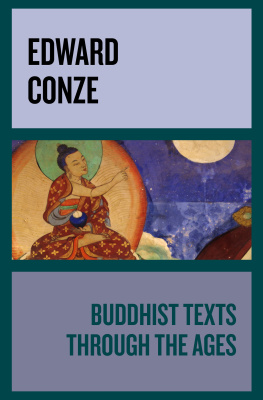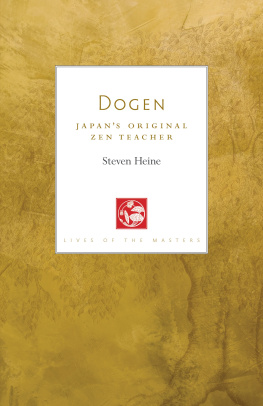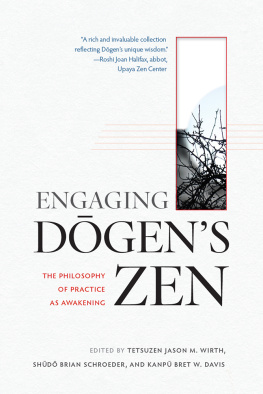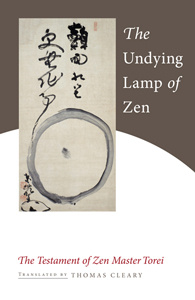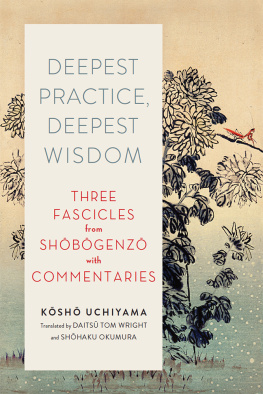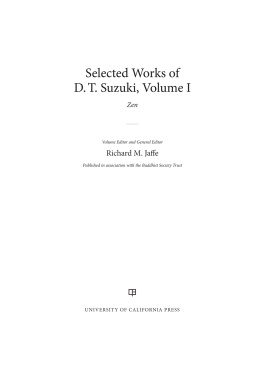
HAKUINS PRECIOUS MIRROR CAVE

Copyright 2009 by Norman Waddell. All rights reserved under International and Pan-American Copyright Conventions.
Library of Congress Cataloging-in-Publication Data
Hakuin, 16861769.
[Selections. English. 2009]
Hakuins Precious mirror cave : a Zen miscellany / edited and translated by Norman Waddell.
p. cm.
1. Rinzai (Sect)DoctrinesEarly works to 1800.
2. Hakuin, 16861769. I. Waddell, Norman. II. Title.
BQ9399.E593E5 2009
294.3927dc22 2008051631
ISBN 978-1-58243-497-1
eISBN 978-1-58243-934-1
Cover and interior design by Gopa & Ted2, Inc.
Printed in the United States of America
COUNTERPOINT
2560 Ninth Street
Suite 318, Berkeley, CA 94710.
www.counterpointpress.com
Distributed by Publishers Group West
10 9 8 7 6 5 4 3 2 1
Dedicated to Nishitani Keiji (19001990),
with grateful memories ,

DEVIL
Even if you enter the gate of nonduality,
if you lack the Bodhi-mind, you will sink into the
ways of the devil. If you want to bring your quest for
the great Dharma to completion, you must spur
forward the wheel of the Four Great Vows.
This fine example of Hakuins calligraphy,
dominated by the single large character Ma
(Mara, the Devil or Destroyer; the enemy
of Buddhist practice), can be said to express
in a nutshell the essence of his teaching.
: Contents :
: General Introduction :
P RECIOUS M IRROR C AVE is made up of two parts. The first is a collection of five works by Zen Master Hakuin (16851768) spanning a wide range of subjects and themes, including some that until now have been unknown in the West. The second is a chronological biography of Hakuin compiled by his chief disciple Trei Enji, the only such work that covers his entire life from birth to death. In the introduction that follows I will situate these works and other of Hakuins principal publications within the teaching career he was busily engaged in over the second half of his life, with the focus on his final twenty-five years during which all the written works appeared.
Hakuin spent his entire life in the small village of Hara in Suruga province (present-day Shizuoka prefecture), a post station on the great Tkaid road that ran between the capital at Kyoto and the administrative center in Edo (present-day Tokyo). This stretch of the road through Suruga province, passing between Mount Fuji and Suruga Bay, was one of the busiest and also one the most beautiful in its entire three-hundred-mile length. A fascinating assortment of people and sights, together with the latest news from around the country, passed in a constant stream through the post station, creating an unusually stimulating environment that would inform young Hakuins mind from an early age. Many of the peddlers, street entertainers, and the like that infested the road became subject matter in writings and paintings that appeared in his later years.
As the son of the proprietor of the post house Omodakaya, which stabled and provided relay packhorses to travelers, Hakuin was raised in relatively privileged circumstances. When he was ordained into the Buddhist priesthood at fourteen, the ceremony took place at Shin-ji, the tiny Zen temple located almost adjacent to his home. And it was there at Shin-ji, after being installed as abbot at the age of thirty-one, that he would remain for the rest of his long life. He was away from the village only when called by his religious activitiesthe extensive Zen pilgrimages in search of enlightenment he undertook in his youth and the countless trips he later made as a priest to conduct practice meetings around the country.
After reaching great enlightenment in his early forties, teaching Zen was Hakuins life, and he taught indefatigably right up until his death forty years later, at the age of eighty-three. In his final decades, he turned to the written word to help spread his teaching. In addition to a number of voluminous works in Chinese in the traditional Zen manner, he composed more than twenty-five works in Japanese that are distinguished by an astonishing range of subjects and themes, and an originality, immediacy, and creative exuberance that make the works of his contemporaries appear dry and pedantic by comparison. The powerful impact of their vigorous style, a direct embodiment of Hakuins indomitable, larger-than-life personality, creates an impression similar to that we receive, often with even greater force, from his painting and calligraphy.
Another distinguishing feature of these writingsseen in The Tale of My Childhood (Chapter One) and Idle Talk on a Night Boat (Chapter Three)is the large amount of personal history they contain, which is especially unusual in a Zen context, because priests have generally been reluctant, in books at least, to discuss their own experiences. The only other example in Japanese Zen that comes readily to mind is the great seventeenth-century Rinzai teacher Bankei Ytaku (162293), whose published sermons are also dominated by stories of his religious quest. But whereas in Bankeis case the sermons were transcribed against his explicit orders and published by his disciples, Hakuin made a very deliberate and persistent effort to put his experiences before the public. This inclination is clear even in his earliest printed works, and definitely increased with age, as if the older he became, the more convinced he was that his personal experiences were as significant, and inspiring, as those of the illustrious ancestors in Zen history whose words and deeds figure so prominently in his works. He obviously felt them to be a legitimate and potent teaching tool, one that, especially being firsthand, could exert great impact on his audience.
Our knowledge of Hakuins religious career is based on three main sources. For the first half, the religious quest that began in childhood and continued up until the decisive satori he experienced in his forty-first year, the primary sources of information are the detailed autobiographical accounts in Wild Ivy and The Tale of My Childhood . They constitute a rich and fascinating personal record with few parallels in Zen literature. While The Tale of My Childhood , the earlier of the two, breaks off in Hakuins twenty-fourth year with accounts of his study under the Zen master Shju, Wild Ivy takes the story a few years further, into the post-satori phase of his career. And although the two narratives cover much the same ground, it is usually possible by comparing similar descriptions of an episode to get a better understanding of the event in question. The enlightenment experience that marks the end of his quest is at once the start of his long and tireless teaching career, and for this the Chronological Biography (Chapter Six) compiled by his disciple Trei remains virtually the only source we have.
Our reliance on Hakuin and his leading heir for information about his life makes it appropriate to question their accuracy. Given Hakuins motive for writinghe clearly wanted his narratives to encourage and caution Zen studentsand a self-acknowledged penchant for exaggeration, we might reasonably suspect that he would embellish or revise certain events in his life to make them agree more closely with his program for Zen study. He may even have invented some. And Trei could well be out to buff up his old bosss reputation, of course. Ultimately, since no independent biographies exist to corroborate or refute their version of events, forming a definitive assessment of their veracity is impossible. That said, in studying Hakuins works over a period of many years, I have found his tales of personal history to be as reliable as most autobiography, with regard both to the events he recounts and the dates that he gives for them.
Next page

